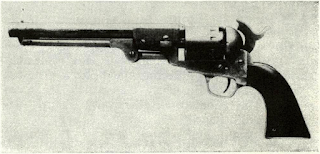In January, , Rigdon, Ansley & Company was
Ansley, though described by Rigdon as essential to
Another threat to the pistol factory by Yankee
Rigdon’s Colt-type revolvers differ obviously from
While the form of the handles is well shaped and
With Jesse Ansley, Rigdon introduced a prominent
The Rigdon, Ansley & Company 12-stoppers (a
Rigdon may have struggled to keep the plant going
Ansley, though described by Rigdon as essential to
Another threat to the pistol factory by Yankee
Rigdon’s Colt-type revolvers differ obviously from
While the form of the handles is well shaped and
With Jesse Ansley, Rigdon introduced a prominent
The Rigdon, Ansley & Company 12-stoppers (a
Rigdon may have struggled to keep the plant going

Comments
Post a Comment